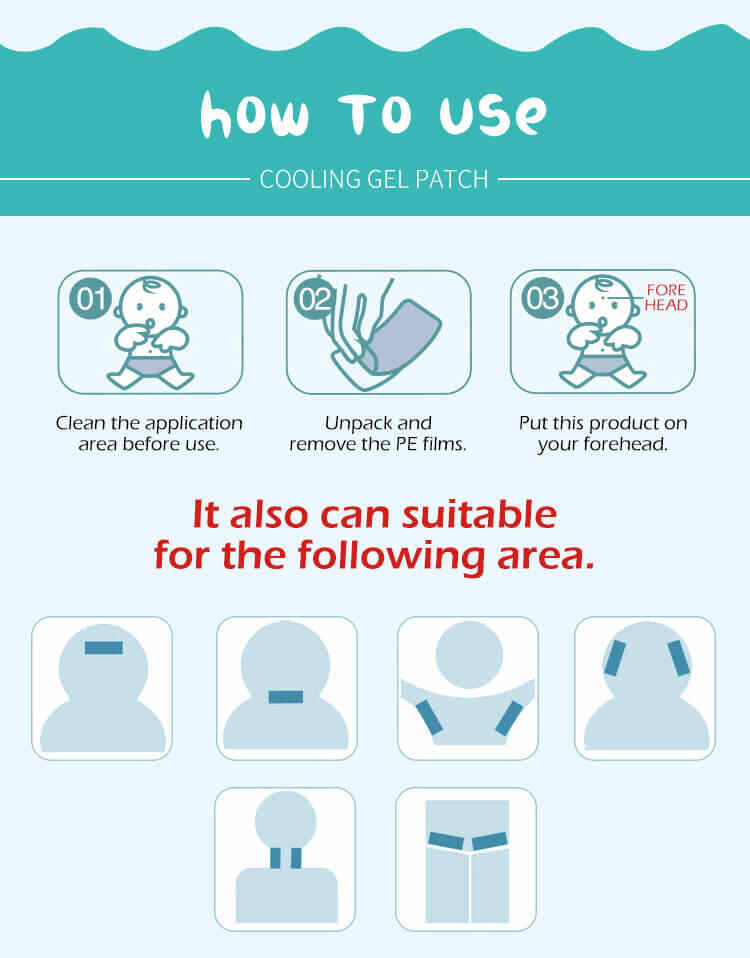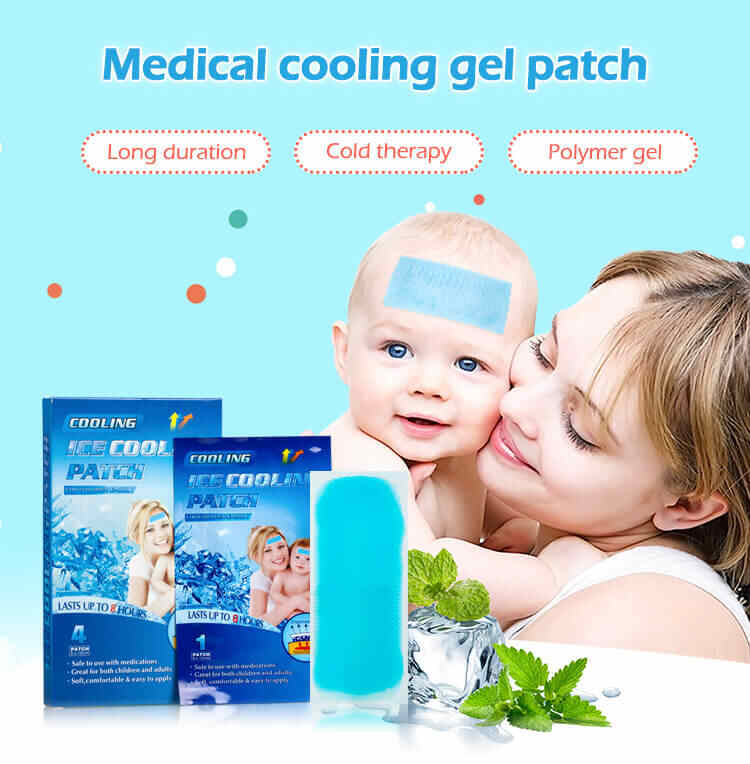Do Custom Hydrogel Cooling Patches Require New Approvals?
A Complete Guide for Brands, Distributors, and OEM Partners
Hydrogel cooling patches have become increasingly popular across the globe for their ability to provide a soothing, refreshing sensation without the need for refrigeration. From fever relief for children to post-exercise recovery and cosmetic skincare applications, the market for these products is expanding rapidly. But if you are considering Custom hydrogel cooling patches or launching Private Label hydrogel cooling patches, an important question arises: Do custom versions require new approvals before they can be sold?
The short answer: It depends on the level of customization, the target market’s regulations, and your manufacturing partner’s existing certifications. In this article, we will break down the regulatory considerations, approval pathways, and strategic approaches to ensure your product reaches the market efficiently while maintaining compliance.

1. Understanding the Regulatory Landscape for Hydrogel Cooling Patches
Before diving into custom product approvals, it’s crucial to understand the basic regulatory framework that applies to hydrogel cooling patches.
Hydrogel cooling patches are typically classified into different categories depending on the country or region:
Cosmetic or personal care product – in some markets where the patch is used for refreshing or skin cooling without making medical claims.
Medical device (Class I or II) – in markets where the product is marketed for fever relief, pain relief, or therapeutic purposes.
Over-the-counter (OTC) product – in countries with a specific OTC product category for cooling patches.
A reputable hydrogel cooling patches Manufacturer will already hold the relevant licenses, such as:
ISO 13485 certification for medical devices.
CE marking for the European Union.
FDA registration for the United States (if applicable).
Local health authority approvals in target export countries.
If you’re partnering with a hydrogel cooling patches OEM supplier, their existing approvals may cover certain customization requests, but not all.
2. What “Customization” Means in the Regulatory Context
Not all customizations are treated equally under the law. From a compliance perspective, customizations can be divided into three main categories:
A. Branding & Packaging Customization
Changes: Logo, colors, box design, language translation, barcode, etc.
Impact: Usually no new regulatory approval is required if the underlying product remains identical and manufactured by a certified facility.
Example: You work with a hydrogel cooling patches Supplier to produce the same formula in your own branded packaging for a Private Label hydrogel cooling patches line.
B. Minor Product Specification Changes
Changes: Size of the patch, adhesive strength, fragrance, or cooling duration adjustment.
Impact: May require updated documentation or minor testing, but not always a full new approval if the formulation and intended use remain the same.
Example: Adjusting patch size for pediatric vs. adult use in Custom hydrogel cooling patches production.
C. Significant Formula or Intended Use Changes
Changes: Adding new active ingredients, altering base hydrogel composition, introducing medicated agents, or targeting new medical claims.
Impact: Often requires a new regulatory submission because the product is materially different from the approved version.
Example: Modifying a standard cooling patch into a medicated pain-relief hydrogel patch containing menthol or lidocaine.
3. When New Approvals Are Needed for Custom Hydrogel Cooling Patches
Whether your Custom hydrogel cooling patches need new approvals depends largely on the extent of changes and where you plan to sell them. Here’s a breakdown:
1. Selling in the Same Market as the OEM Manufacturer
If your OEM partner’s factory already has approval for the product in that market, and you only change packaging/branding, you can typically “piggyback” on their certification.
2. Exporting to a New Country
Even without product changes, many countries require local registration or import licensing.
A hydrogel cooling patches Manufacturer with global export experience can often assist in documentation for faster clearance.
3. Changing Formula or Adding Claims
Any alteration in composition or claims (e.g., “reduces fever” → “relieves migraine pain”) may require re-testing and re-approval.
This is especially important in medical device-regulated markets like the EU, US, and Japan.
4. How an Experienced OEM Partner Simplifies Approval
Choosing the right hydrogel cooling patches OEM partner can make or break your market launch timeline. An experienced supplier will:
Assess customization requests early to determine approval requirements.
Provide existing test reports (safety, biocompatibility, stability, etc.) to support regulatory submissions.
Adapt documentation for local compliance without starting from scratch.
Advise on claims wording to avoid triggering unnecessary reclassification into a higher-risk category.
For example, a leading hydrogel cooling patches Manufacturer might already have CE and FDA registrations for their base product. If your customization is minimal, they can often add your branding under their existing license.
5. Approval Requirements by Region – Quick Overview
United States
FDA may classify hydrogel cooling patches as medical devices (often Class I, exempt from premarket notification) if therapeutic claims are made.
Custom branding under the same formulation generally requires labeling compliance, not new product clearance.
European Union
Requires CE marking under the Medical Device Regulation (MDR) if medical claims are made.
Private Label manufacturers can operate under OEM certification if documented correctly.
Asia-Pacific
Countries like China, Japan, and South Korea may require registration with local health authorities, especially for medicated patches.
Cosmetic-type cooling patches have lighter approval requirements than therapeutic ones.
Middle East & Latin America
Often require local import permits and labeling in the official language, even for unchanged formulas.
6. Strategic Tips for Fast Market Entry with Custom Hydrogel Cooling Patches
Define your market claims early – Decide if your patch will be positioned as cosmetic or medical; this determines approval complexity.
Work with a globally compliant OEM – Select a hydrogel cooling patches Supplier with a proven export history.
Leverage existing approvals – Use your manufacturer’s certifications where possible to reduce time and costs.
Avoid unnecessary formula changes – Keep modifications minimal if speed to market is critical.
Prepare documentation in advance – Certificates of Analysis (CoA), Material Safety Data Sheets (MSDS), ISO certifications, and stability reports.
7. Risks of Skipping Proper Approvals
While it might be tempting to rush custom products to market, skipping regulatory compliance can have severe consequences:
Product seizures at customs
Fines or penalties from regulatory authorities
Product recalls damaging brand reputation
Loss of trust from distributors and customers
By collaborating with a reliable hydrogel cooling patches Manufacturer, you minimize these risks through professional regulatory guidance.
Conclusion
Do Custom hydrogel cooling patches require new approvals? Sometimes yes, sometimes no — it depends entirely on the extent of customization, target markets, and regulatory classification. If your customization is limited to branding and packaging, and your OEM partner already holds relevant certifications, you may not need new approvals. But if you change the formula, add new ingredients, or enter new regulated markets, expect to go through some level of testing and approval.
The best approach is to partner with an experienced hydrogel cooling patches OEM or hydrogel cooling patches Supplier who understands global compliance requirements. This ensures your Private Label hydrogel cooling patches reach the market faster, legally, and with a competitive edge.
Related Questions & Short Answers
Q1: Can I launch Private Label hydrogel cooling patches without testing?
A: If the product is identical to the OEM’s approved version and only the branding changes, you may not need new testing, but labeling compliance is still required.
Q2: What documents should my hydrogel cooling patches Manufacturer provide?
A: Certificates of Analysis, ISO certifications, product safety reports, stability data, and regulatory approvals.
Q3: Do formula changes always require new approval?
A: Yes, if the changes affect safety, performance, or intended use, regulatory bodies will require new evaluations.
Q4: Can a hydrogel cooling patches Supplier help with import licenses?
A: Many experienced suppliers assist with local registration and provide necessary documents to speed up customs clearance.
Q5: How long does new approval take?
A: It varies by country — from a few weeks for cosmetic classification to several months for medical device registration.






